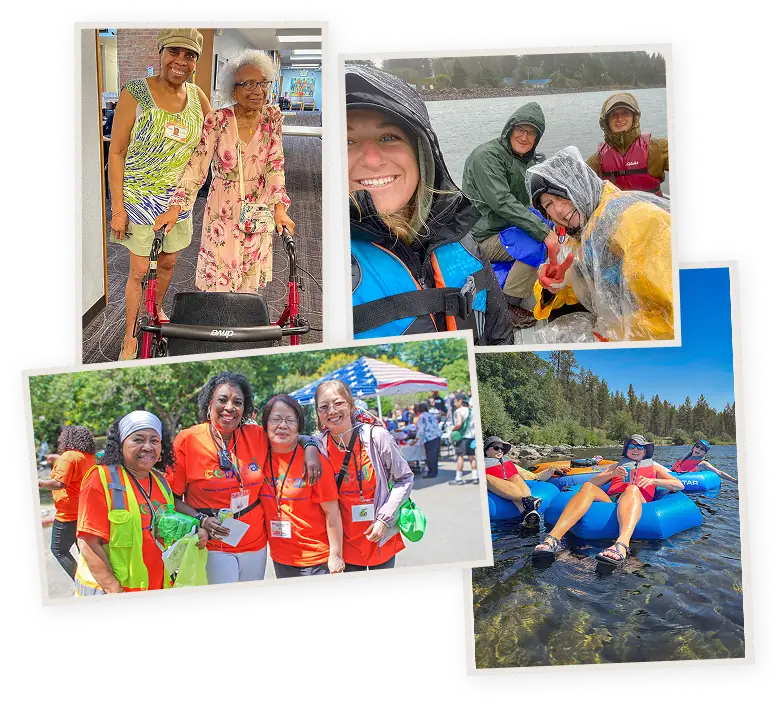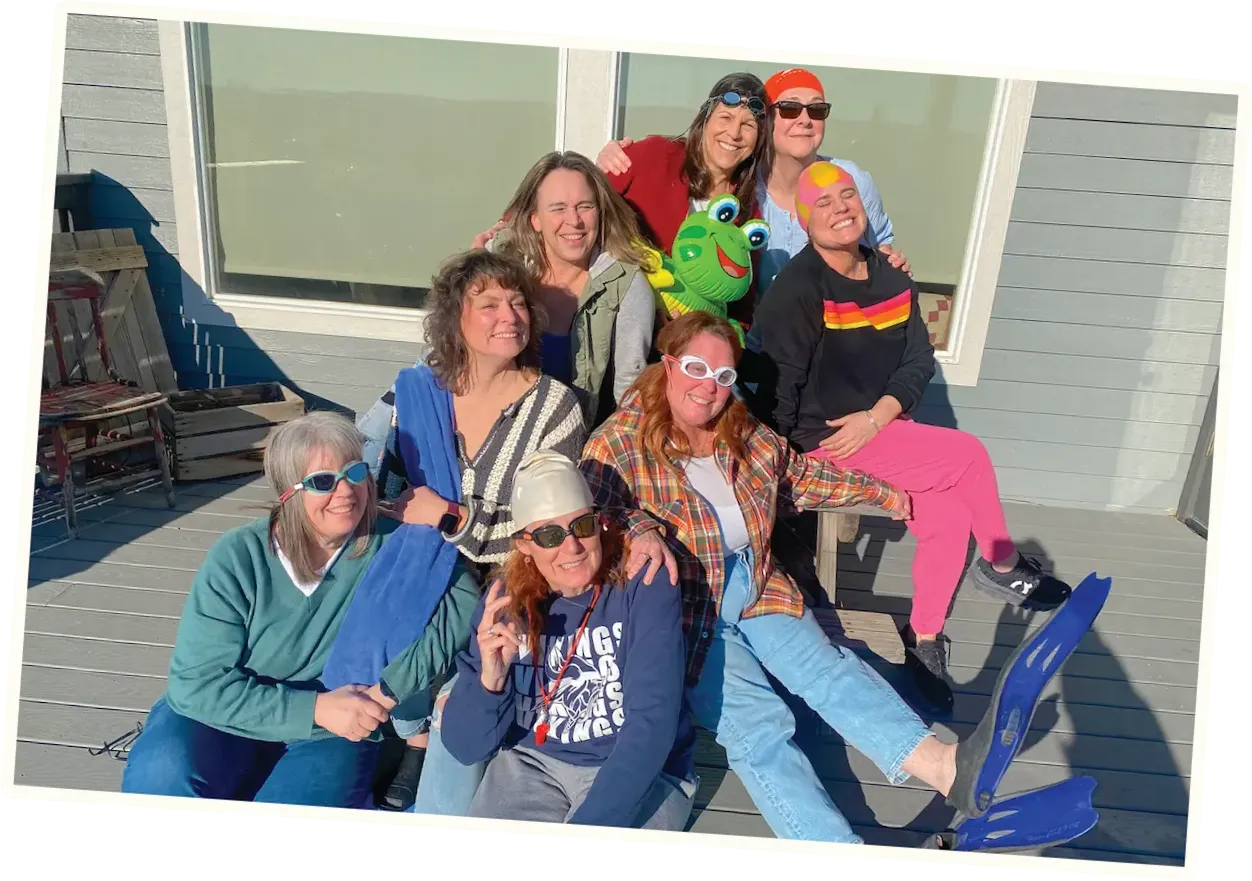Tips for building new bonds and stronger old ones
If you feel nervous meeting people, you’re not alone. It’s normal to feel uncertain about what to say or to worry about how you’ll be received. But the more you do it, the easier it gets to start conversations and build friendships.
These suggestions might help you get more comfortable talking to new people, get more connected to people already in your life, and feel more at home in the world.

Making everyday relationships stronger
Sometimes the strongest connections happen with people already around you — next door, in your community, or in your extended family. Here are some reminders and practical tips to help you grow closer to the people already in your life.
Listen carefully. Put aside distractions and really take in what they’re saying, rather than planning what you’re going to say next or offering advice (unless they ask for it). People feel valued when they feel heard, and genuine listening lays the foundation for deeper trust.
Ask people about themselves. You could ask where they grew up, what they enjoy doing, or how their day is going. Most people will be happy to share, and you might be surprised by what you learn.
Ask follow-up questions. If someone shares something about their day or life, ask how it made them feel or what happened next. This shows you care and helps you learn more about them and what’s important to them.
Don’t be afraid to go from small talk to deeper talk. Casual chats are a starting point, but deeper bonds form when we talk about real experiences. Those might be challenges we’re facing or things that bring us joy.
Be willing to go first with an invitation or offer. Waiting for someone else to make the first move can leave everyone feeling isolated. Invite a neighbor for coffee or drop off a plate of cookies (or extra tomatoes from your garden). Your effort could be the nudge they need.
Say yes when they propose a walk, meal or shared activity. Chances to connect often come in small packages. Say yes more often to a quick stroll, a bite to eat or a casual chat.
Remember that consistency builds connection. One conversation is a start, but relationships grow over time. Keep showing up in small ways. Even a brief check-in every so often can make a big difference.
Connecting with people from different cultures
Relationships with people from different places or backgrounds can broaden your perspective, experiences or social network. But many people feel a bit unsure how to connect with people from different backgrounds. Here are a few ideas to help.
Be intentional about it. Our society often keeps people from different religions, races and even economic backgrounds apart. You might need to take action to reach across invisible barriers. Join a club or project that puts you in contact with different people — or simply decide to reach out to an acquaintance or neighbor.
Reflect on your own culture. Everyone has a culture, even if it’s a blend of many cultures. Culture came from generations before you, but it’s still expressed by your family or community. Your culture and the groups you identify with influence the way you see the world.
Ask people questions about their cultures and traditions. Most people are happy to share, once they know you’re genuinely interested. Listen to people tell their stories.
Read about other people’s cultures and histories. You don’t have to be an expert. Your friend is the expert on their own culture.
Be OK making mistakes. You might say or do something that offends someone, simply because you didn’t know better. You can learn from that. Ask the person what bothered them, apologize and move on. Keep building your friendship.
Making friends who are younger or older
Intergenerational friendships can bring new perspectives, meaningful conversations and joy. Here are some suggestions for connecting across the ages.
Consider the benefits of friendships across generations
- Younger friends can offer inspiration or new tech tips. And so can older friends!
- Older friends can share wisdom, stories or offer new perspectives on challenges. And so can younger friends!
- Both help reduce stereotypes about different generations and promote a more positive outlook on aging.
Start with a simple mindset shift. Instead of thinking “I can’t relate” try “I am curious about …” Wondering what life is like for other people opens the door to connection and friendship.
Start with shared ground. Mention something local: a new shop in town, a neighborhood event, or a change in your community. If you met at work, a faith-based activity or a volunteer event, use that setting as a jumping-off point.
Try some conversation starters
Curiosity can go a long way! Here are a few opening lines.
-
“Which shows are you watching right now?”
-
“What music are you listening to?”
-
“What are you reading?”
-
“Where did you grow up?”
-
“Is there a cause or issue you’re passionate about?”
-
“What’s something school didn’t teach you that you’ve had to learn on your own?”
-
“What’s a fun memory from school?”
-
“Can you help me figure out how to use Venmo (or Spotify, Facebook, my camera, or so on)?”
-
“Can you show me how to cook that dish (use that tool, train that pet, or so on)?”
Checking in on people on their harder days
It’s normal to feel hesitant to reach out or unsure what to say when friends experience loss, illness or big life changes. But connecting with them shows you care and can make their tough days better. Here are some ideas.
Call or text them. Not just once but regularly.
Include them in activities. If they’re immobile or just not up for leaving their home, think of activities that work for them. Maybe it’s a chat and a cup of tea at their house. Maybe it’s a video call.
Be proactive. Rather than asking them to “let you know if they need anything,” tell them you’ll pick them up at noon for lunch at their favorite spot.
Reach out even if you’re not especially close. A message, card, meal or visit can mean a lot. Many people won’t ask for help, so don’t wait. Just show up with kindness.

When a group of friends becomes a kind of family
Angela, on the upper left in the photo, gets together at least yearly with a group of longtime pals. “We have been friends through grade school and through all of life’s trials and tribulations,” she says. “They are my chosen family.”